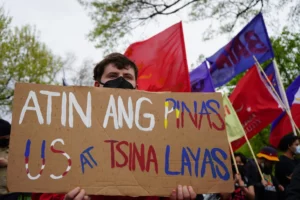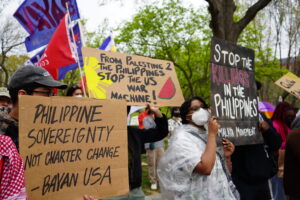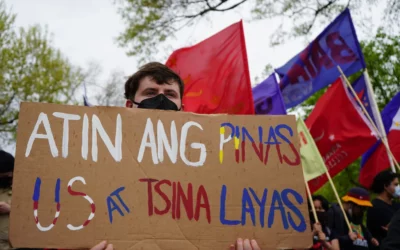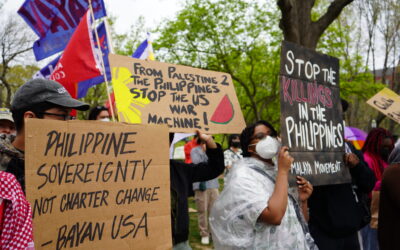By IVAN EMIL LABAYNE
www.nordis.net
To begin, I digress—here already, a puzzle, for how can you digress at the beginning when there is nothing yet to digress from? —for this shall be the flavor of this piece. Digressions.
In my head, without Google’s aid, I have to think twice before attaching one event to a year, and another event to another year. Specifically: the Baguio earthquake—1990 iyun ano? —and the Pinatubo eruption, down south, but for Manilenyos, still up north—the one that took place in 1991, marking its 30th year this 2021.
(*A digression: the same applies to my knowledge, and distinction of two historic events from five decades ago: the Diliman Commune and the First Quarter Storm. I had to reassure myself in my head before saying out loud (in classes, lately): FQS ang 1970, Diliman Commune ang ’71; hence it’s the latter that marked its 50th year this year. Fifty years since the 70s, wow; that just reminded me of an observation I read when EDSA/Panagbenga-traffic 2019 gave way to pandemic 2020: we’re closer now to 2060s than the 1960s—the period of radicalism, cultural revolutions and leaps forward, the students and the youth barricading streets, making love on the freeway, smoking weed counterculturally, defying the old, post-war generation of scarcity, thrift and conservatism. What a telling observation, how the 1960s, high times for activism and progressive thought and action are now as distant as the moon seemed before Neil went there, as alien as the colonizers’ tongue when we first heard them.)
Thirty years after a major volcanic eruption: not the one that buried a church in Albay, but one that is temporally close enough I was able to *accidentally* hear people who were there, in a way, talk about their experiences then, three decades ago in Zambales.
*** *** ***
Work-from-home setups blurred a number of things: the place where you poop and the place where you make presentations; the place where you feed babies and the place where you talk of infantilization and capitalism in graduate school. Your mother might be talking to grade-five students while you’re trying to listen to your teacher about Mabini and Tandang Sora. Your sibling might be greeting someone over the phone with “Good morning mamser, how may I help you today?” while you try to respond to your boss’s strained Monday greeting of “Good day everyone!”
I was done with synchronous classes so it was not a problem when Jesa left the computer in loudspeaker for a zoom discussion about the Pinatubo eruption. Apparently, it was significant to the agency where Jesa works—her bosses and some of her colleagues were there, involved in measuring or analyzing magma levels, in raising alerts or communicating warnings, in assessing the extent of the aftermath, lahar-wise, livelihood-wise.
Of the things that stood out to me, I wish to share how the speaker underlined that event as being “unprecedented.” Perhaps bizarrely, residents near Pinatubo never thought of it as a volcano to begin with; they thought it was just a mountain because it did not have a crater on top! So, the event was unprecedented not just in the simpler—but no less astonishing—sense that indicators like the height and the surrounding areas reached by contents spewed by the volcano were extraordinary. It was unprecedented in the more basic yet also extreme sense that the people were ill-prepared for any eruption because they did not think there’s a volcano that might erupt, only a mountain that is mostly generous and life-giving.
*** *** ***
What I learned first from Elizabeth Kolbert’s Field Notes from a Catasrophe I relearned in the zoom session Jesa attended: how the Pinatubo eruption contributed to the cooling of the planet’s temperature, however short-lived (in ‘geologic’ time). Kolbert: “Volcanic eruptions release huge quantities of sulfur dioxide—Pinatubo produced some twenty million tons of gas—which, once in the stratosphere, condenses into tiny sulfate droplets.” These droplets in turn prevent the absorption of sunlight, instead reflect it “back into space” (103). It’s not a small decision to paint your house either with a dark or light color; or the kind of clothes you’ll be packing on a trip to a province like, say Isabela or Cagayan, known for their roof-raising temperature you wish roofs are literally raised higher for better ventilation. White, brighter colors would reflect sunlight back; darker colors would absorb them, putting more heat onto your body, or your house.
Three decades ago, a volcanic eruption somewhere in the Philippines helped in bits of global cooling, much-needed perhaps given what has happened in the next thirty years. When we heard of the kilometers covered by the Pinatubo’s spewed materials once they hit ground, Jesa and I thought that thousands, tens of thousands of lives might have been taken. A few slides later, we were rectified: only a few hundred died, and mostly not after being directly exposed to volcanic materials, but while trying to evacuate or recover things from their houses.
I could not speak of the same about the 1990 Baguio Earthquake; I’m unfamiliar with its long-term and geographically widespread effects. I’m guessing those quakes did not help in lowering the planet’s temperature. If they lowered anything, it’s the number of floors allowed for every construction in the central business district—pero nasusunod pa ba ‘yun? Thirty years after the Pinatubo eruption and the cooling it helped engender is alive less in our skins and our full-blast fans right now than in books of trivia. Thirty-one (years? Eons? Seconds? Memories?) after the Baguio earthquake, and we hear proposals about multi-level parking lots and the latest, state-of-the-art technological engineering as another humanly arrogant/capitalistic business-as-usual attempt to tame natural processes; pretend we comprehend them fully we can subsume them to our (the capitalist’s) narrow interests (money, profit).
When the capitalist says it’s doing things for you, it got it all for you, it will give you a sunny life, that’s not digression, that’s a marketing technique. In a word, a prevarication. In a monosyllabic word, a lie. # nordis.net

![By IVAN EMIL LABAYNE www.nordis.net To begin, I digress—here already, a puzzle, for how can you digress at the beginning when there is nothing yet to digress from? —for this shall be the flavor of this piece. Digressions. In my head, without Google’s aid, I have to think twice before attaching one event to a […]](https://www.altermidya.net/wp-content/uploads/2021/06/Nordis-opinion-1.jpg)








0 Comments